Scanners, Hoarders, and Collectors
http://www.artpractical.com/feature/scanners-hoarders-and-collectors/

Scanners, Hoarders, and Collectors
February 6, 2014
The storage problems facing most families are the result of an increase in the volume of items
to be stored without a proportionate increase in space. As your family grows and interests
expand, so does the demand for storage. But unless you have enlarged your home to keep
pace with your family’s growth, the total storage area has not changed; the units have only
become more crowded.
—Sunset Ideas for Storage in Your Home1Thus there is in the life of a collector a dialectical tension between the poles of
order and disorder.—Walter Benjamin2
Scanners: About
“Scanners is a month-long used bookstore project that highlights the book as a physical object
in an increasingly dematerialized world.”3
Nick Hoff and I wrote this brief sentence in an attempt to succinctly describe the Scanners project, which
would take place during October 2011 at the Mina Dresden Gallery on Valencia Street in San Francisco.
As I recall, it took an extremely long time to write, as we were both trying to define something that had
not yet happened. What follows is an expanded version of that description from my perspective,
incorporating both hindsight and the connections that have emerged between the Scanners project and
my numerous collections.
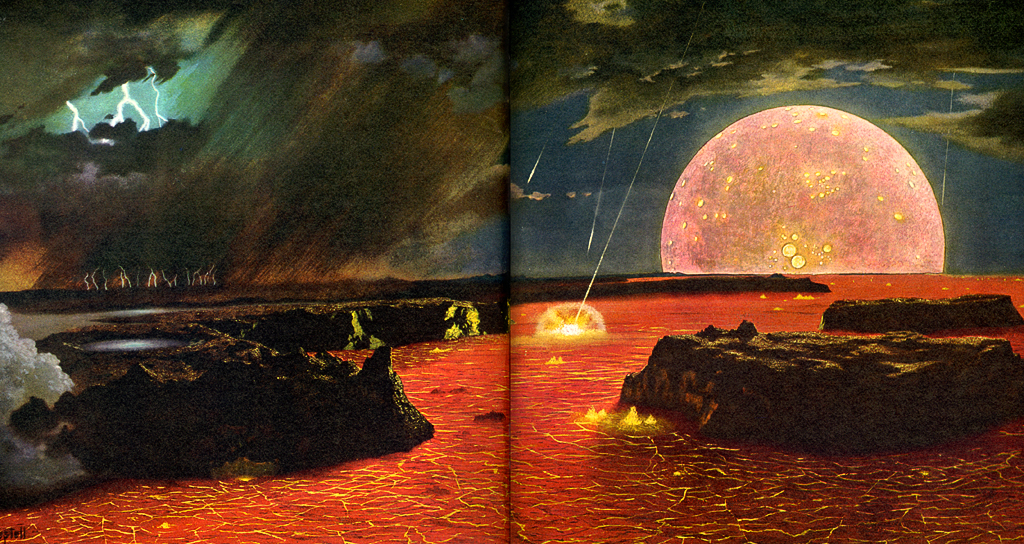
Scanners: Indeterminate Objects
While the focus at Scanners was set squarely on the physical object, this object was almost always a
book whose nature was bound up in questions of its purpose and/or value. It was a book that was
undecided. This type of book inspired the Scanners project and continues to inspire my personal
collection.
An example of an undecided book might be The World We Live In, Volume 1: The First Four Billion Years
(1962). It’s a Time-Life publication with an evocative cover illustration by Chesley Bonestell, which
transports the viewer to a mid-twentieth-century imagining of a primeval Earth. The book does not supply
current information, it has no monetary value, and it’s far from rare (you can find a copy anywhere). But
it’s an object in which the lack of those qualities in no way diminishes its value as source material and
inspiration—qualities not rationalized by the market.
Scanners: Economic Models
Scanners grew out of the experiences Nick and I had in the used book business. Over the years, I have
bought and sold used and rare books and records regularly at flea markets in London, New York, and
San Francisco in support of my work as an artist. Likewise, Nick supports the work he does as a writer
and translator with his used book business. As a consequence of this part-time self-employment I have
built an extensive visual library that has become fully integrated into my studio projects.
The economics of the used book business was one of the many factors that led to the Scanners project.
When I first began selling books, they went straight to used bookstores or directly to customers at the
flea market. In the late 1990s, online bookselling on websites like Amazon, BookFinder, and AddALL
was in its infancy. Consequently, there was no definitive Internet database for establishing an
agreed-upon value or price for a title. Instead, this calculation was made using an informal knowledge
base developed by booksellers, collectors, and book scouts. The price of a book was determined through
experience, word of mouth, and, most importantly, through an interaction with the book itself. It was a
knowledge gained through the direct handling of a physical object.
With the rise of the Internet marketplace, Nick and I eventually built substantial book inventories online. In
addition, we’ve maintained a stall at the Alemany Flea Market in San Francisco for nearly fifteen years.
But Amazon changed what and how we sold. Books that had a substantial economic value no longer went
to bookstores or the flea market but instead were listed online. And yet it was the books that remained in
our possession—these indeterminate books that were deemed to have no value on Amazon (and often by
the bookstores)—that were frequently the most interesting.

Scanners: Valuation
In a short time, our knowledge, research, and training in recognizing the value of a good or interesting
book had been supplanted by an algorithm created by Amazon. This algorithm dispensed with taste and
knowledge in favor of the lowest price and/or highest sales ranking. We knew that not all books could or
should be sorted this way, and we had years of experience in determining value by our own standards.
Suddenly, this approach was gone. With Scanners, we wanted to question this Internet database of
books as a small and artificially constructed space defined by money and popularity rather than
aesthetics or information. It was by no means the only space. We wanted to propose that determining
value could be based on something other than the lowest price.
As the outlet for books migrated from a physical space to a virtual space, methods of searching for books
also changed. This search, initially based on visual training and memory, gave way to a search based on
algorithms and databases and the increasing use of specific tools dependent on these databases. Enter
the term scanners, which refers both to a small USB device used to read a book’s bar code and to the
individual operating the device. The scanning tool is most often handheldbut can also be strapped to the
arm and operated by an index finger, melding human and machine. The resultant cyborgs flip through
books and bar codes like treasure hunters with metal detectors on a beach.
But we can see the problem here: bar codes only began to appear on books in the late 1970s. Does this
mean that books without a bar code have no value? To the scanner, both human and machine, they do not.
Scanners: Categories
“Sections in the store were left unmarked and organized according to their own internal logic,
leaving customers to discover patterns on their own. For example, philosophy and critical theory
were not alphabetized but followed paths of influence, while a Havelock-inspired “technologies of
the word” section spanned Homer, the invention of writing, Plato, oral culture, McLuhan, and
typography. The sections themselves were also arranged in a way that invited interpretation. One
run of sections, for instance, began with technologies of the word and ran through poetry,
philosophy, and literature.”—Nick Hoff4
Nick’s comments point to our different approaches when considering organizational strategies for Scanners.
While we both contributed to all sections of the store, Nick’s sections were more concerned with text while
mine were more concerned with images. Inverting the left brain/right brain duality, the store was organized
with visual materials on the left side and text primarily on the right. My sections were purposely left
unorganized. The section on art housed everything from Basil Wolverton and Sophie Calle to Isamu
Noguchi and popsicle-stick sculpture. I wanted to introduce the element of chance to the visual sections. I
wanted visitors to get in there and really look, and I was interested in the inadvertent juxtapositions that
might be uncovered as a result.
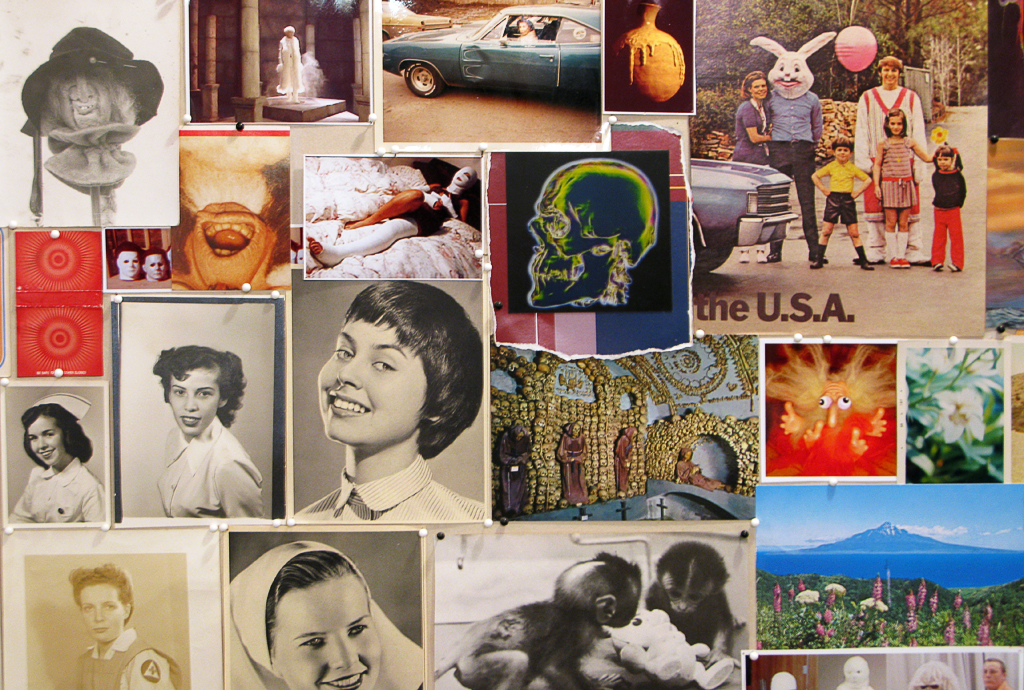
Collecting, Culling, Constructing
The element of looking is essential to my studio practice and has its roots in the scavenging or salvaging
that I’ve always done in my work with books and ephemera. My project is centered on the collection and
research of visual materials, and it evolves through a methodology that often uses collage as both
investigation and final work. My home studio houses my collections of books and objects, and through
them I construct a world, an alternate universe. This accumulation provides the space I most want to
inhabit. It’s a collection of old and new things: books, artwork, trolls, color wheels, photo collections,
paper and ephemera, latex monster masks and props, ceramic mushrooms, holograms, underground
comix, images of cavemen, and old wood paneling, among other things. Outside, succulents grow from
cuttings and abandoned plants. It is a collection of things that are dead and alive. Collecting these
objects saves them and gives them life. Some of them are reconfigured into new things and new pieces.
Others just lay there, waiting.
My collections are an integral part of who I am. On one hand, these piles of materials are a requirement
for my work, as well as a comfort. The floor space, walls, and tabletops of my studio have been
completely given over to my collections for many years. On the other hand, these piles threaten the order
of my existence.
In 2012, I realized that I physically could not see my work through the clutter and spent six months
cleaning and emptying half of the studio. When I was finished, the space was split in two: one side to
look at things and the other side to work on things. This design strategy also applies to my book
collection and my relationship to objects in general. There is a constant tension between finding things
and ordering things, between wanting to acquire things and wanting to get rid of things. When I make
work now, I move a few objects from one side of the studio and place them in the other side of the
studio, where I try to see them in a new context—or, maybe more accurately, where I can look at them
out of context. Context can be everything.
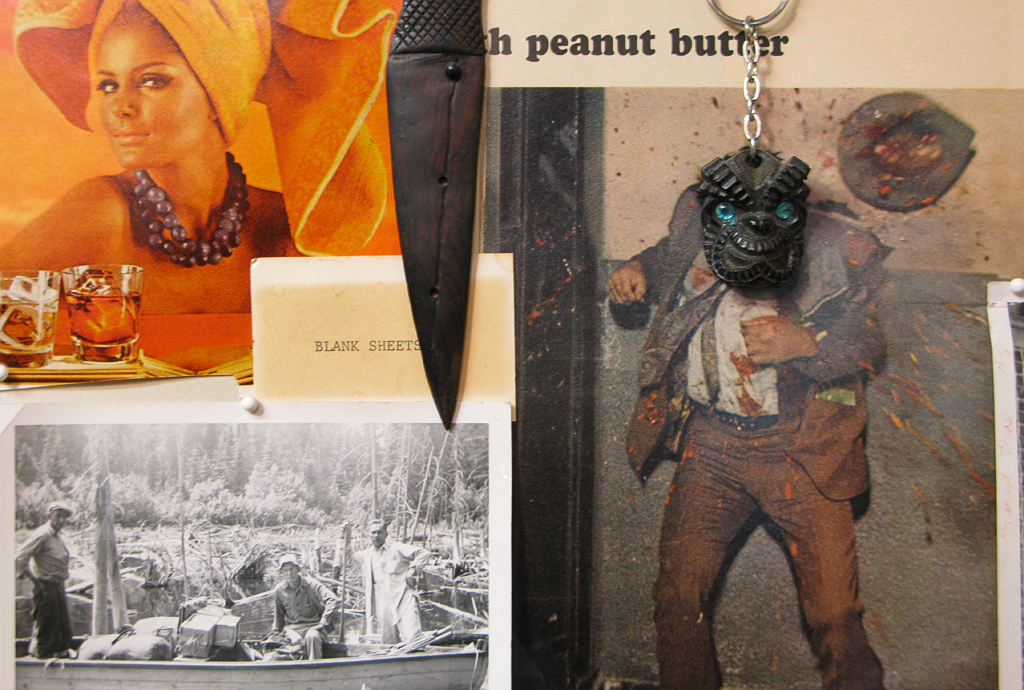
Fantasy of Modernist Order
While I can embrace the disorder of my collection, I also find myself seduced by the consumer-grade
modernism that everyone buys into, from the white cube gallery space to IKEA. This is the
contradiction: my constant desire to accumulate and amass is opposed in equal force by my desire to
liquidate and de-access. I imagine living in a geometrically perfect empty space, with my collections
offsite. They would be stored in an immaculate temperature-controlled warehouse equipped with every
sort of fetishistic storage and organizational option available: flat files for my decaying psychedelic
posters and Xeroxed punk rock flyers; archival storage bins for my moldy, rotten magazine collections;
rows of shelving and glassine cover protection for my books; and everything catalogued in a searchable
private database. Rows of tables, where I could examine the objects in my collections under perfect
lighting, would line the center of the room.
This fantasy of order, this fantasy of being able to see everything that has been collected, was briefly
realized with Scanners. The collections, which began as piles of boxes heaped up in basements and
hallways, became exhibits and display pieces. For a single month, we could see what we had been
doing while rummaging through flea markets, garages, and dumpsters for a year. Scanners was held in
a gallery space with white walls and dedicated lighting, a place where “things” were seen out of their
usual context and “value” was created through an isolation of the indeterminate object. In relation to
the flea market, Scanners occupied a space at the opposite end of the spectrum. The gallery setting
brought with it a different set of rules for determining value and a different set of expectations for the
viewer. On many occasions visitors were confused, unsure whether they were encountering an
exhibition or a store. This reaction was something we had not expected but of course welcomed.
Scanners: Building the Collection
For any book collector, finding a special book is a pleasure on par with owning that book. The
memories this creates are integral to the process. With Scanners, collecting was ramped up as Nick
and I spent three to four days a week, sometimes more, for a year buying books specifically for the
project (and this was separate from our primary work in the studio, teaching, writing, and bookselling).
We collected approximately four hundred boxes of books for a store that was open for just one month.
When asked if we’re planning another version of Scanners, I always try to explain the distinction
between pleasurable collecting and the anxiety of mass accumulation.

Completists
My personal collection of books (which grows weekly) is an ambiguous and uncontrolled project. This
ambiguity is why I’ve never considered myself a true collector. In my mind, the true collector is someone
who must have certain objects, acquire complete sets, organize, and have one of everything. The
Internet promises the possibility of this completist viewpoint. It provides the capacity to obsessively
collect, document, and categorize in ways never before possible. From the Google Books Library Project
to the IMDb, there is a current belief in the possibility of actually completing every set, capturing every
loose book, uncovering every film—an idea that if it’s not searchable online then it doesn’t exist. One of
the intentions of Scanners was to question this belief and to suggest the limitations of these structures.
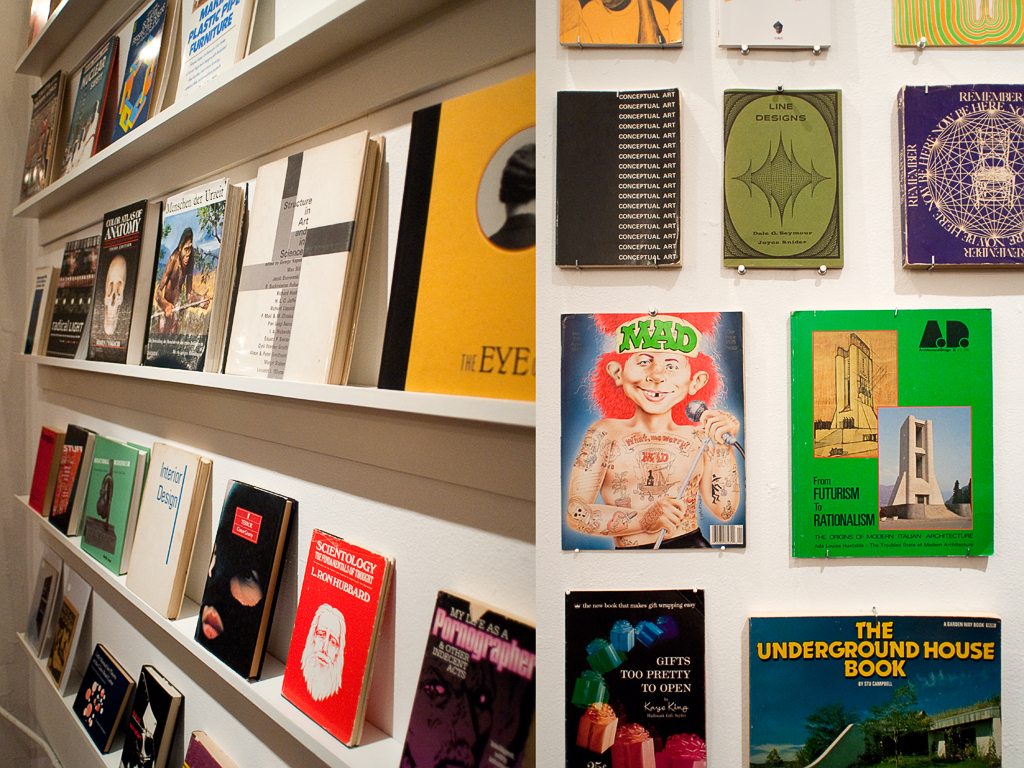
Scanners: Display and Duration
With Scanners, we wanted to highlight the books’ qualities through the use of display. We have always
sold our books in flea market parking lots, where display options consist of moldering card tables and file
boxes on the ground. There, it is understood that you might have to get on your hands and knees to find
the good stuff.
We came indoors to the gallery space with Scanners, and the display strategies of the flea market spread
out. While some of the store was arranged in a conventional fashion (books on shelves, spines out), at
least seventy percent of Scanners was devoted to face-out display. It was important that visitors could
clearly see the covers of the books. From our experience at the flea market, we knew that people were
interested in the books we had laid flat on the tables simply because they were more visible.
At Scanners, we built two sixteen-by-ten-foot tables—three hundred twenty square feet of table space for
face-up display—and then dedicated the entire front half of the gallery to face-out wall display. Some of
the books were permanently affixed to the wall, following the pattern of the source material arranged in
my studio, while a rotating selection of books sat face-out on purpose-built rails. A typical retail store,
where economic factors drive display tactics, might have difficulty surviving with the low
volume-to-square-footage ratio we had at Scanners.
We also liked the idea of a limited duration for this project. One of our ideas for what a bookstore could
be was unintentionally transposed onto the duration of a typical gallery show, and so the store was open
for a month, no longer. The idea that Scanners would be permanent was never our intention. We wanted
this to be an alternative to the typical bookstores that we knew.
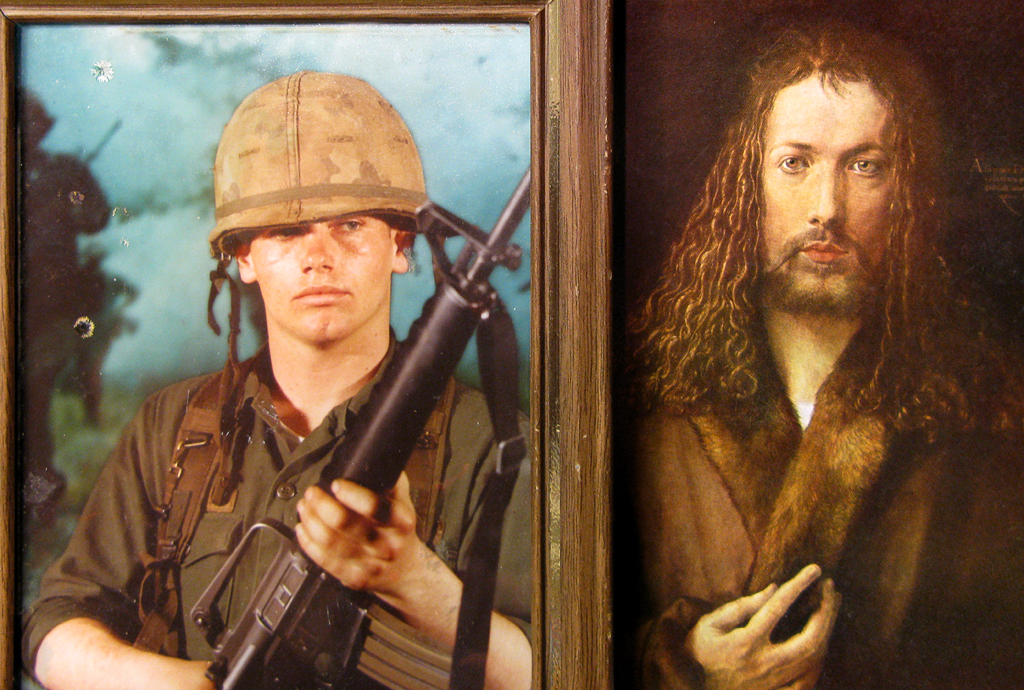
Scanners: San Francisco, 2011 and 2014
If we did want to open another Scanners—even for a single month—the climate in San Francisco has
changed so drastically since 2011 that it might not be possible. Certainly, we must have been two of the
last tenants to rent an affordable space on Valencia Street before the current real estate boom. The Mina
Dresden Gallery closed a few months after our project ended, and we were subsequently inundated with
emails inquiring about the availability of the space.
Since the completion of Scanners, Nick and I have continued our book businesses online while our
presence at the Alemany Flea Market has become more infrequent. Part of this is due to the physical
labor involved in the flea market project, but it also reflects a larger change. I started out buying and
selling books in purely physical spaces that were specific to small, local economies, such as the
Chelsea Flea Market in New York or the Alemany Flea Market in San Francisco. In these spaces, the
books that were bought and sold circulated primarily within the local communities.
With the rise of the Internet marketplace, our interaction with local communities of readers and artists
has diminished greatly. The majority of our books are now sold to people outside of San Francisco,
paralleling the reported exodus of local literary and artistic culture from the city. San Francisco is no
longer the used book Mecca it once was, and rising real estate costs have made projects like Scanners
prohibitive. Nick and I continue with our scavenging work in a climate of market rationalization of
objects, and we continue to find amazing things. There may come a point, though, when everything has
been found and catalogued…and there is nothing left of the physical world but the scans.
Notes:
1.Editorial staff of Sunset Books, Sunset Ideas for Storage in Your Home (Menlo Park: Lane Book
Company, 1958), 4.
2. Walter Benjamin, “Unpacking My Library: A Talk About Book Collecting,” in Illuminations: Essays
and Reflections (New York: Schocken Books, 1969), 60.
3. “About Scanners,” Scanners, accessed January 3, 2014, http://www.scannersproject.com/about.html.
4. Email exchange with the author, November 24, 2013.
5. All photos: Matt Borruso.